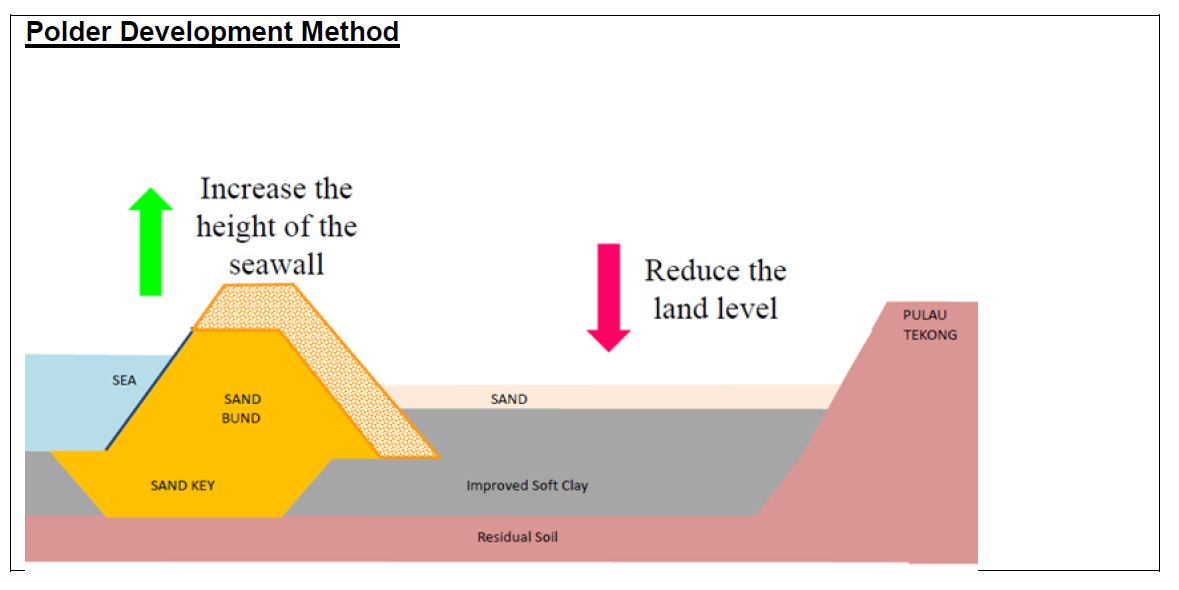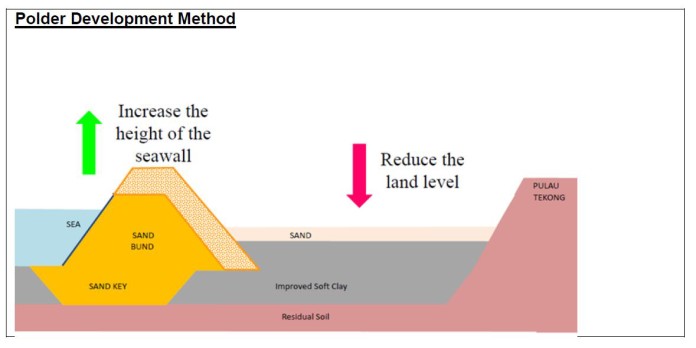SINGAPORE: A new method of reclaiming land will be used on the northwestern tip of Pulau Tekong, and this aims to help Singapore reduce the amount of sand needed for such works and save on upfront costs.
The new method, called polder development method, will be adopted by the Housing and Development Board (HDB) for the project, announced National Development Minister Lawrence Wong during his visit to the polder site at Pulau Tekong on Wednesday (Nov 16).

Traditionally, sand is used to reclaim land to above sea levels, but the new method involves developing a polder – a low-lying tract of land reclaimed from the sea. A dike or wall is built to prevent seawater from entering the polder while a network of drains and pumps controls the water levels.
This reduces the amount of sand needed for reclamation and saves on upfront construction costs, HDB and the Ministry of National Development (MND) said.
Mr Wong added that sand is not always easy to come by, and the project will reduce the country’s reliance on sand for reclamation works.
The reliance on sand imports was keenly felt in 2007, when Indonesia announced its decision to ban the export of land sand to Singapore. It was reported at the time that Singapore was importing six to eight million tonnes of sand, with more than 90 per cent coming from Indonesia. This led to price increases in construction works and having to source for more sand from other markets.
Mr Wong also said this new method will help build up capabilities. “We know that we are facing the threat of climate change, sea levels rising and we are low-lying in Singapore. With this project, I think the experience that we gain in learning how to build dikes, in learning how to manage coastal areas, will be very important for us as we deal with the threat of climate change in the longer term.”
When the reclamation is completed around 2022, Pulau Tekong will have an additional 810 hectares of land, or about the size of two Toa Payoh towns. The land has been earmarked for military training.
To ensure the long-term safety of the polder land, the HDB drew on the experience of the Netherlands, which has used this method for land reclamation for many years, and has the world’s highest standards for dike safety, HDB and MND said. An environmental study has also been carried out to ensure there will not be significant impact on the surrounding marine environment and wildlife.
The tender for the polder project is expected to be called by the end of this year, and construction will start in end-2017, HDB and MND said.





